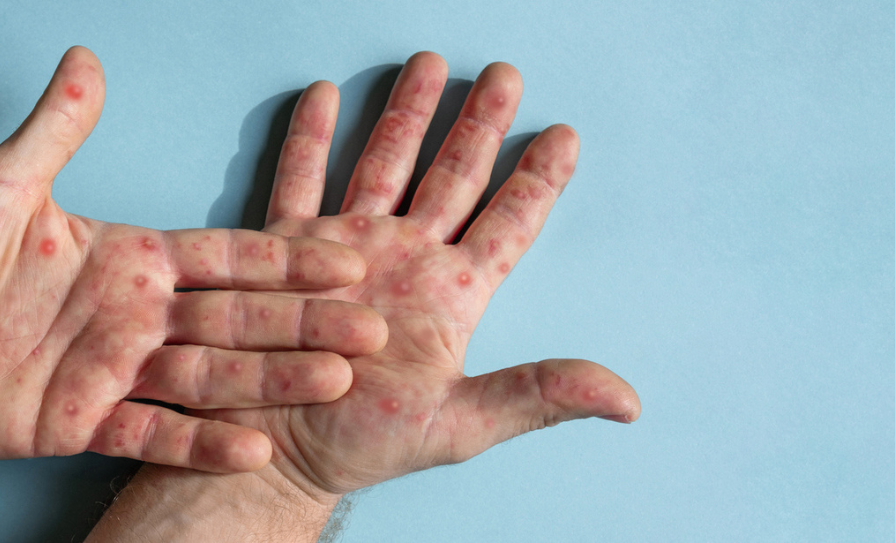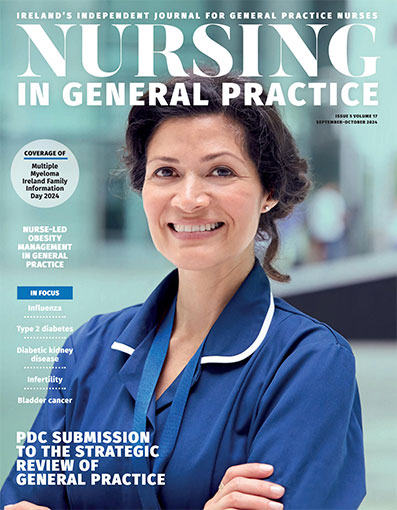The Rebel County was the setting for this year’s Multiple Myeloma Ireland (MMI) Patient and Family Information Day, which took ‘inspiring hope’ as its theme – an apt choice considering the rapidly growing number of treatment options for this relatively rare blood cancer. The unique annual meeting offers patients, their families, and carers the opportunity to learn from experts in the field and meet other patients and carers. Then Lord Mayor Kieran McCarthy opened the day’s proceedings, and praised MMI for offering those present a chance to share their own cancer story.
“Sharing stories is so important. Everyone in the room has been on a journey. Some of the stories brought you hope and some of them did not, but long may we share these stories and cope and live with multiple myeloma.”
MMI Chairperson Mary Kelly, Advanced Nurse Practitioner at Midland Regional Hospital Tullamore, explained that with just 400 people diagnosed annually, it is unsurprising that most patients have not heard of multiple myeloma at the time of their diagnosis. Therefore, building awareness is key, and MMI is working hard to raise the profile of this “invisible cancer”, she said. “This is so that when people are diagnosed, they have already heard of multiple myeloma and we are removing some of that fear that can be associated with the disease.”
MMI is endeavouring to achieve this via awareness campaigns, social media, podcasts, vlogs, research grants, and
annual events. “Each one of us can make a difference but together we can make real change,” Ms Kelly added.
‘Phenomenal’ improvement in outcomes
Prof Deirdre Murray, Director of the National Cancer Registry of Ireland (NCRI), used registry data to highlight the impact of multiple myeloma at both an individual and national level. The disease accounted for about 1.6 per cent of all malignant invasive cancers in Ireland during the most recent period for which there is data, namely 2019-to-2021. It is the third most prevalent blood cancer after non-Hodgkin lymphoma and leukaemia, comprising 16 per cent of all blood cancers during this period. Prof Murray put this in context: “There were 10 times more prostate cancer cases diagnosed than multiple myeloma cases during the period 2019-to-2021 and 10 times more lung cancer deaths than multiple myeloma deaths during 2019-to-2021.”
The NCRI data shows an average age at diagnosis of 70 for men and 72 for women, and while there has been an increase in the incidence of multiple myeloma each year – roughly 0.7 per cent for males and 0.6 per cent for females – the data also clearly illustrates the significantly decreased mortality rate in both males and females. Prof Murray explained that an annual decrease of 1.1 per cent every year during 1994-to-2021 was observed. “By 2018, 64 out of every 100 multiple myeloma cases survived their cancer for five years or more,” she told the audience. “I would urge you to look at the differences – back in 1998 that was just 24. That is just phenomenal. No other cancer has seen an improvement to that level.”
Early treatment of multiple myeloma
Dr Vitaliy Mykytiv, Consultant Haematologist at Cork University Hospital (CUH), gave an overview of the condition at the meeting. Unlike a solid tumour, multiple myeloma is a tumour of the plasma cells in the bone marrow, and is largely asymptomatic in its early stages, known as monoclonal gammopathy of undetermined significance (MGUS), he explained. MGUS is quite common and it is only in some cases that it progresses to smouldering myeloma and then to multiple myeloma, which is when symptoms such as bone pain, malaise, weight loss, and anaemia become apparent. An early diagnosis of MGUS, however, appears to impact survival time positively, he added.
While it is a relatively rare cancer, Dr Mykytiv noted that the incidence of multiple myeloma is twice as common in black populations and that incidence is growing. One in every five patients diagnosed with multiple myeloma in the US is African American.
Survival, overall, has been steadily increasing over the past two decades, thanks to the advent of the autologous stem cell transplant and also the introduction of immunomodulatory drugs such as thalidomide and lenalidomide, as well as proteasome inhibitors including bortezomib. “The aim of treatment is to achieve remission and we want it to be as deep and durable as possible. Usually, the most durable period of remission is after the first-line of treatment,” Dr Mykytiv noted. The disease will undergo “clonal evolution”, however, and with progressive lines of treatment, the periods of remission will be shorter. Yet this varies significantly between patients, he noted; some will have very low-risk myeloma due to the specific genomic profile of their disease and will stay alive for “many, many years” after first-line treatment.
When treatment should be initiated is a big question, and in recent years this has moved to a recommendation to treat those with smouldering myeloma who fulfil a certain set of criteria (SLiM-CRAB criteria), such as myeloma affecting more than 60 per cent of their bone marrow plasma cells and a lesion big enough (>5mm) to be detected on an MRI or PET scan. Dr Mykytiv said it “makes sense” to treat earlier and the job is now to gather the evidence. Clinical trials are exploring treatment while a patient still has MGUS, and one of these trials will hopefully be initiated in CUH in the not-too-distant future.
For the first-line of treatment, patients who are young and/or fit enough to be eligible for a stem cell transplant will receive one. Those who are ineligible will typically receive a combination of lenalidomide, bortezomib, and dexamethasone, but in the coming months it is hoped that the combination of daratumumab plus lenalidomide and dexamethasone will be approved for reimbursement. The MAIA Phase III trial showed that this was well-tolerated and, at five years, more than two-thirds of patients were still alive. Multiple tests are carried out to determine if a patient is responding to the combination they receive, and maintenance treatment is then initiated if they reach remission. “The length of maintenance therapy should be balanced with toxicity, the depth of response, and whether the patient is high-risk or not,” Dr Mykytiv told attendees. He concluded by noting that while multiple myeloma remains incurable, there are multiple lines of treatment available for every type of multiple myeloma patient, especially those who relapse.
Staying positive
Living with multiple myeloma is only truly understood by those who have a diagnosis, and the patient perspective came from Colin Hawkins, retired footballer and current manager of Shamrock Rovers B, who first experienced rib pain in November 2022. “I knew this wasn’t right – it was more than a bruised or broken rib.” Mr Hawkins was eventually diagnosed with multiple myeloma in January 2023 at the age of 46. “Your world falls apart when you hear it is cancer, and multiple myeloma is one that I had never heard of before. It was very scary – the toughest part was telling my wife.” Mr Hawkins praised the care and support he received, especially when he went public with his diagnosis. “The number of people who reached out to me, who were my age, I found that a massive help.” Hawkins had an autologous stem cell transplant and reached remission 100 days after his diagnosis. He is now on maintenance treatment and says he is also keeping a positive outlook and looking forward to getting fitter, stronger, and healthier. “I know I am going to be here for a long time to come, especially with treatments improving all the time.”
Navigating treatment-related side-effects in multiple myeloma
New treatments and treatment combinations offer significantly better outcomes for multiple myeloma patients, but can come with a host of treatment-related side-effects to navigate. Áine Herlihy, Clinical Nurse Specialist at CUH, explained that both the disease and its treatment will contribute to how a patient feels. Excess myeloma cells cause calcium elevation, renal impairment, anaemia, bone pain, fatigue, infection, and other symptoms, while treatment can cause other issues such as myelosuppression, peripheral neuropathy, diarrhoea/constipation,
or deep vein thrombosis.
Most multiple myeloma patients will spend some time on steroids, given that they are the backbone of treatment, ensuring other anti-myeloma drugs work better, Ms Herlihy explained. “You are all familiar with this, steroids have many side-effects. They can affect nearly every organ of the body,” she said. Mood changes like irritability, anxiety, hyperactivity, and depression are typical when taking steroids. “We regularly hear patients say that they feel like a different person on the days they take their steroids and this is also noticed by their loved ones.” Key to managing these changes in mood or behaviour is understanding the pattern of these changes by keeping a symptom diary, she advised. Sleep disturbances are also common, so Ms Herlihy said the advice is to take the drugs early in the day, and they must also be taken with food as they are prone to causing gastrointestinal upset.
For many patients, peripheral neuropathy is an ongoing and long-term symptom of their multiple myeloma journey. “This is damage, inflammation, or degeneration of the peripheral nerves, and peripheral neuropathy typically affects the hands and feet.” This can manifest as sensory neuropathy, which is tingling in the hands/feet, and also motor neuropathy, where muscle weakness and gait disturbances can be an issue. Ms Herlihy explained that there is no known treatment directed at protecting or repairing the nerves but she urged those suffering from peripheral neuropathy to contact their healthcare provider. “It can be tempting to ignore or downplay the side-effects of chemotherapy if it is otherwise working,” she said. “It’s natural to want to stay on a medication that is treating blood cancer, even if you are experiencing side-effects. However, peripheral neuropathy can become severe or permanent if left untreated.”
She concluded by saying early recognition and management of side-effects can minimise long-term impact and help keep people on treatments for as long as possible, while simple steps like dose reductions or scheduling changes can also help hugely.
Looking to the future for multiple myeloma
What does the future look like in multiple myeloma treatment? This was outlined by the final speaker, haematologist Dr Jorge Monge, Assistant Professor of Medicine and Associate Director of the Myeloma Centre at Weill-Cornell, New York.
Dr Monge, who is heavily involved in clinical research, echoed other speakers by highlighting the many and significant advances that have been made in multiple myeloma treatment, saying there has been a constant improvement in overall survival over the past five decades. “This translates into an average life expectancy of around 10 years for someone diagnosed with multiple myeloma today.” These improvements, he said, have been mostly driven by new drug discoveries but also improvements in supportive care.
This decade has been marked by the advent of next generation treatments for multiple myeloma. “In the 2020s, we have seen the approval of five T-cell redirecting therapies, CAR Ts, and bispecific antibodies, which have revolutionised the treatment of heavily pretreated relapsed/refractory multiple myeloma,” he explained.
Chimeric antigen receptor T-cells, or CAR Ts, are human T-cells that have been genetically modified and expanded in the laboratory before they are infused back into patients to target a specific tumour antigen, Dr Monge explained. This highly personalised therapy is showing high efficacy, as are bispecifics, which direct a host’s immune system (specifically the cytotoxic T-cells) against cancer cells by binding the protein CD3 on T-cells with a target antigen on cancer cells. Because bispecifics engage and activate the patient’s own immune cells, they have a toxicity profile similar to CAR Ts, including cytokine release syndrome and immune effector cell-associated neurotoxicity syndrome. Inpatient monitoring helps minimise toxicity, he added.
Efficacy for the new therapies, including ide-cel, cilta-cel, teclistamab, elranatamab, and talquetamab, is “impressive”, he said – for example, the overall response rate for ide-cel is 73 per cent and cilta-cel is 98 per cent. “And these are responses that last a very long time – progression-free survival is anywhere from nine-to-35 months with these therapies.”
Infections are common, and there remains limited data on long-term survival outcomes, but Dr Monge said they have nonetheless revolutionised outcomes in multiple myeloma. “The T-cell revolution is here,” he said. “We’ve gone from an ORR (objective response rate) of 30 per cent, to anywhere between 60 to nearly 100 per cent.” Dr Monge noted that the indication for these therapies has been widened recently, meaning even more patients can access these groundbreaking therapies.
The goal now is to make T-cell redirecting therapies even more effective, and more novel targets are being explored. One issue with CAR T cell therapy is the time it takes to grow the cells – often several weeks. There are now efforts to make CAR Ts faster and cheaper, and these next generation CAR Ts are already in development, with faster manufacturing approaches and the production of ‘off-the-shelf’ CAR Ts.
Treatment that is also showing promise involves the cereblon E3 ligase modulatory drugs such as mezigdomide, with impressive response rates of up to 50 per cent in patients who have already received CAR T-cell therapy. “This seems to be a very good therapy to give to those patients who have relapsed after getting T-cell redirecting therapy. This shows a very good outlook for patients who have received everything that is currently available.”









Leave a Reply
You must be logged in to post a comment.